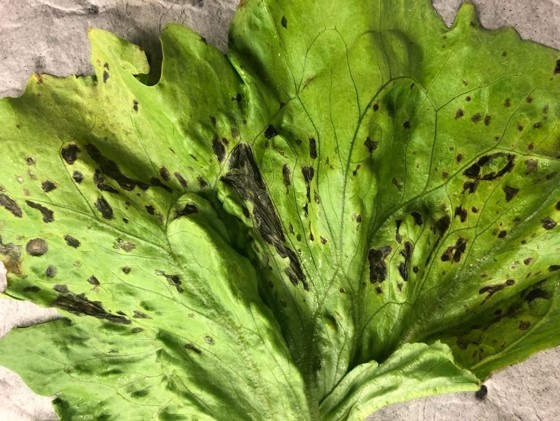
Bacterial Stain
WHAT IT IS AND HOW TO ELIMINATE
Lechuga y similares
Bacterial Stain
Xanthomonas Campestris
Pathogen:
Bacterium
Type:
Risk to the plant:
HIGH
Bacteriosis

WHO CAUSES IT?
The pathogen Xanthomonas campestris is a gram-negative bacteria that is characterized by its ability to produce exopolysaccharides, which allows it to form biofilms and adhere to plant surfaces. This pathogen develops and proliferates in warm and humid conditions, commonly in temperatures ranging between 25°C and 30°C. Xanthomonas campestris is spread primarily through splashing water, contaminated tools, and infected plant material. When the bacteria comes into contact with the plant, it penetrates through stomata, wounds or natural openings, colonizing the intercellular spaces of the leaf parenchyma. Once established, the bacteria multiply, producing toxins and enzymes that degrade cell walls and cause necrosis in plant tissues. During unfavorable periods, Xanthomonas campestris can survive in plant remains and soil, reactivating when environmental conditions are again conducive to its development.
SYMPTOMS
Bacterial spot caused by Xanthomonas campestris on lettuce manifests as small watery lesions that quickly become necrotic. This disease causes a significant loss in crop quality, affecting both the appearance and structure of lettuce leaves. The lesions are initially small, watery and dark in color, expanding and developing a yellowish halo as the infection progresses. In severe cases, the Taches merge, forming large necrotic areas that can result in the death of leaf tissue.
- Small, dark, watery lesions on the leaves
- Yellowish halo around the Taches
- Expansion and fusion of lesions
- Leaf tissue necrosis
- Loss of visual and structural quality of the leaves
- Reduction in the photosynthetic capacity of the plant
- Premature death of leaf tissue in severe infections


DEVELOPMENT CONDITIONS
Temperature:
25-30°C
Humidity:
80-100%
HOW IS IT SPREAD?
Irrigation water, Contaminated tools, Infected plant material, Contact between plants, Water splashes, Plant remains in the soil
HOW TO ELIMINATE IT?
Home treatments
Natural allies
There are no natural allies
Chemical treatments
RECOMMENDED PRODUCTS TO ELIMINATE THE PEST
REPELLENT PLANTS
-
RECOMMENDATIONS
- Avoid wetting the leaves when watering, do it directly to the ground.
- Removes diseased parts and plant remains from the soil.
- Always use clean and disinfected tools.
- Do not handle plants when they are wet.
- Improves ventilation between plants to reduce humidity.
- You can use copper-based treatments as a preventative.















